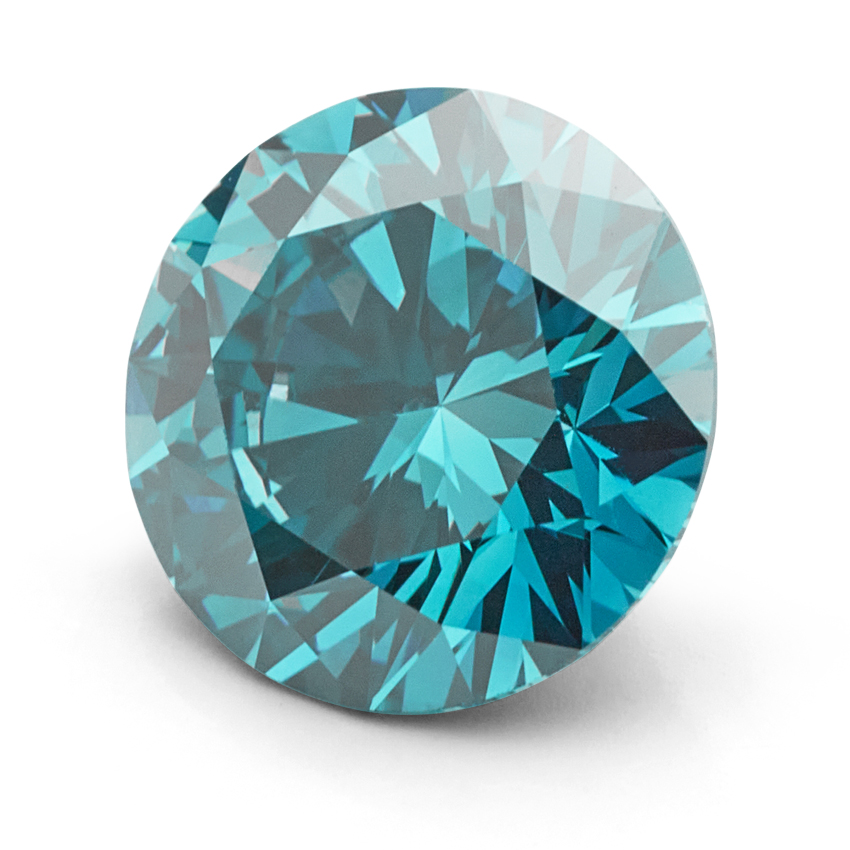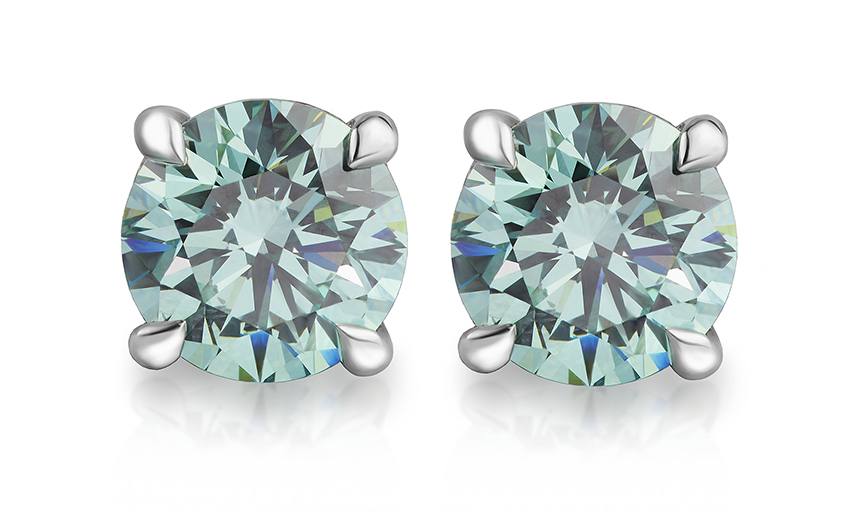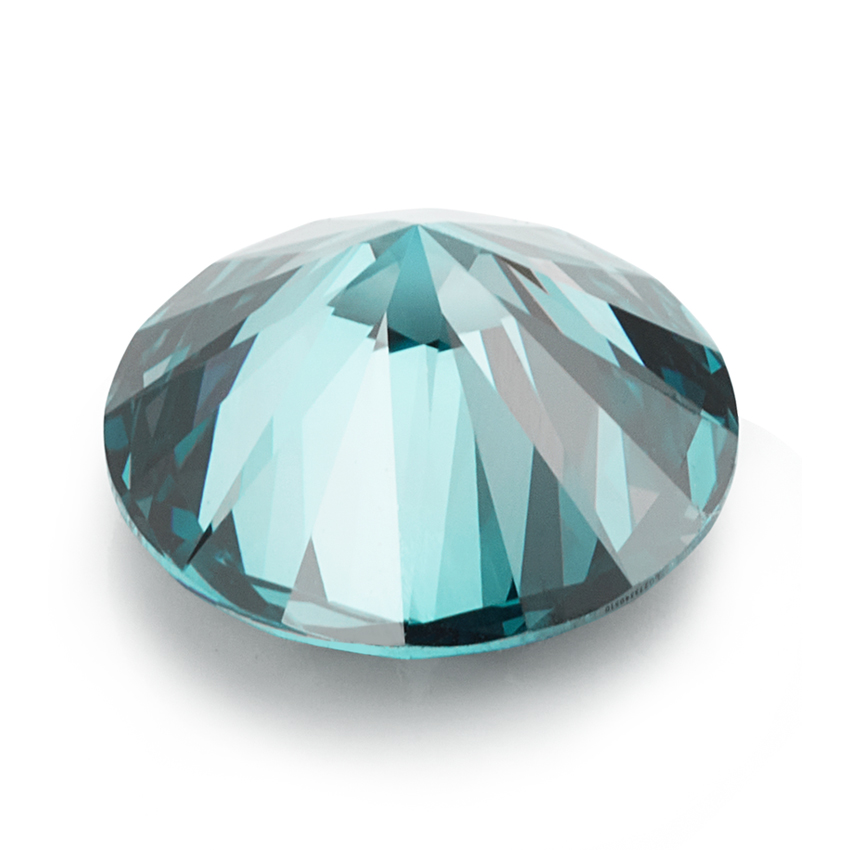Following the success of our lab-grown diamonds service, we recently added blue lab-grown diamonds to our selection of coloured lab-created diamonds. For many years, our team have sourced natural fancy-coloured diamonds for trade and private clients interested in an alternative to a traditional white diamond.
Owing to the rapid expansion of laboratory-created diamonds, we have experienced a greater demand and availability of fancy-coloured lab-grown diamonds. For this reason, we have one of the greatest choices of lab-created blue diamonds available.

Advanced creation techniques
The creation of lab-grown blue diamonds involves High-Pressure, high-temperature (HPHT), and Chemical Vapour Deposition (CVD) processes.
In the HPHT method, a seed diamond is exposed to high pressure and temperature, while the CVD method uses carbon-rich gases heated in a plasma reactor.
Adding boron during the growth process introduces the blue colour, which gives the diamonds their distinctive hue. These methods produce high-quality diamonds that are almost identical to natural ones.
Shades of blue lab-grown diamonds
Based on a selection of recent jewellery commissions, we have sourced a variety of shades of blue diamonds, ranging from light blue to deep blue. But remember, we typically source each diamond individually owing to the subtle variation of colour from one commission to another.

As a result, very few engagement ring commissions look alike, owing to the variety of hues. The reason lies in the treatment process and the introduction of Boron during the manufacturing process.

Just like natural blue diamonds, lab-grown blue diamonds exhibit a blue colour due to the presence of Boron in the diamond. The concentration of Boron and the presence of other chemicals such as Nitrogen often cause variations in the diamond’s hue and intensity of colour.

Sizes, shapes and clarity for blue diamonds
Remember, there are far fewer blue lab-grown diamonds than white diamonds. For this reason, we suggest you stay open-minded to the selection of available diamonds. We regularly source fancy-shaped blue diamonds in a selection of cuts. For example, Round, Princess, Emerald and Cushion cut diamonds.
Many of our lab-grown diamond engagement rings feature centrepiece diamonds. As a result of lower prices compared to natural diamonds, many buyers opt for carat weights between 0.70 carats and 1.50 carats for their engagement ring.
When it comes to diamond clarity, most lab-grown diamond options provide a very high level of clarity. In contrast, natural diamonds, although rare by comparison, often feature visible inclusions given less consideration in the buying process.
We avoid low-clarity lab-grown diamonds grown rapidly such as the “Lightbox” brand of man-made diamonds made by DeBeers. Instead we source high quality lab-created diamonds, fully certified and polished to meticulous standards with an exceptional diamond cut. We include a full lab grading report as part of our client’s purchase.
How to buy a blue diamond without seeing it in person?
Our diamond concierge service helps clients from local buyers to customers on the other side of the World. Our team work with high-resolution 360-degree videos and photography. As a result, we can send clients clear imagery to make their choice. In doing so, our clients receive the perfect natural or lab-grown blue diamond ring. Furthermore, we provided the added benefit of bespoke design.
Many of our clients not only look for a unique diamond but a unique design to showcase the stone. We work with clients to design CAD model and craft the perfect engagement ring with expert guidance at every step of their journey.
Ethical blue diamonds
A further benefit of a lab-created blue diamond comes from the ethical credentials associated with man-made diamonds. We verify that all of our diamonds are conflict-free. At the same time, lab diamonds provide a 100% ethical guarantee to buyers.
Teal blue diamond ring
One of our latest commissions provided the precise shade of diamond colour for our client. As part of the design brief, we sourced a teal-blue coloured diamond.
View the teal-blue diamond ring on our dedicated bespoke design page.

Mixing blue diamonds with alternative gemstones
By far, the best combination pairs a blue diamond with a white diamond. For example, at the heart of a custom-made diamond cluster engagement ring. Or, set either side of the coloured gemstone as part of a three-stone or blue diamond trilogy ring. An example can be seen below, created for an overseas client with a lab-grown greenish-blue diamond surrounded by white diamonds.

Lab-grown vs natural blue diamonds
The following chart shows a comparison between both natural and lab-grown options.
| Criteria | Natural Blue Diamonds | Lab-Grown Blue Diamonds |
|---|---|---|
| Cost | Expensive | More affordable |
| Ethical Considerations | Potential ethical concerns | Guaranteed conflict-free |
| Environmental Impact | High environmental impact | Low environmental impact |
| Physical Properties | Same as lab-grown | Same as natural |
| Availability | Limited | Increasing |
| Rarity | Very rare | Less rare |
Market insights and trends
The expanding market for lab-grown blue diamonds continues to provide consumers several benefits. The popularity of man-made alternatives comes from affordability and ethical production methods.
From our own work, bespoke jewellery showcases their variation in hues and high quality.
Current trends indicate a growing preference for lab-grown diamonds, driven by their lower cost and the demand for sustainable and ethically produced products.
As awareness and availability increase, lab-grown blue diamonds are set to become a significant part of the jewellery market.
About Mark Johnson
Mark founded Isle of Wight jewellers Serendipity Diamonds in 2007 after a career on the polished diamonds industry. Today he works in the Serendipity showroom, helping clients with jewellery, creating handmade designs and updating their two jewellery websites SerendipityDiamonds.com and Isle-of-Wight-Jewellery.co.uk



